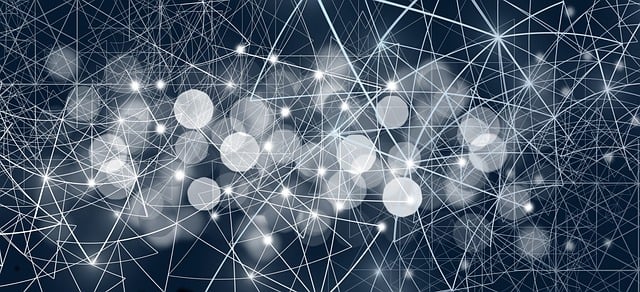Artificial Intelligence: A Journey Through Future Technology
Artificial Intelligence (AI) is a concept that has shifted from being part of science fiction to becoming a driving force in today’s technological world. But what is Artificial Intelligence really, and how has it evolved over time?
Definition of Artificial Intelligence
Artificial Intelligence refers to machines’ ability to perform tasks that typically require human intelligence. This includes the capacity to learn, reason, solve problems, perceive the environment, and process natural language. While the idea of intelligent machines has existed for centuries, the term “Artificial Intelligence” was coined in the 1950s by computer scientist John McCarthy.
Evolution of Artificial Intelligence
From its early days, Artificial Intelligence has experienced several waves of advancements and challenges. The first wave focused on symbolic logic and problem-solving, while the second wave concentrated on knowledge and data representation. The current, third wave centers on machine learning and data-driven artificial intelligence.
Types of Artificial Intelligence
There are two main types of Artificial Intelligence: narrow (or weak) and general (or strong). Narrow AI specializes in specific tasks like voice recognition or product recommendations. On the other hand, general AI has the ability to perform any cognitive task a human can. Currently, most practical AI applications are narrow, but research in general AI is ongoing.
Machine Learning and Neural Networks
Machine learning is a crucial component of modern Artificial Intelligence. It involves machines learning patterns and performing tasks without explicit programming. Neural networks, inspired by the human brain’s structure, are a popular approach in machine learning. These networks can recognize complex patterns and perform tasks like image classification or automatic translation.

Practical Uses of Artificial Intelligence
Artificial Intelligence has found applications in various fields, transforming how we live and work. In healthcare, AI is used for disease diagnosis, outbreak prediction, and personalized treatments. In the financial sector, AI applications manage risk, detect fraud, and optimize investments. In education, AI is employed for personalized teaching and individualized feedback.
The Role of Artificial Intelligence in Automation
One of the most impactful aspects of AI is its ability to automate routine and repetitive tasks. AI-driven robots and autonomous systems are revolutionizing manufacturing, logistics, and the supply chain. This not only increases efficiency but also frees humans to perform more creative and strategic tasks.
Ethical and Social Challenges
As Artificial Intelligence becomes integral to our society, ethical and social challenges arise. Automated decision-making raises questions about responsibility and transparency. Additionally, concerns exist that AI could contribute to massive job automation, necessitating reflection on reeducation and workforce adaptation.
The Future of Artificial Intelligence
The future of Artificial Intelligence promises exciting innovations and unique challenges. AI is expected to evolve towards more autonomous systems capable of understanding context and ambiguity. The convergence of AI with other technologies, such as augmented reality and quantum computing, will open new possibilities and trigger even more astonishing advances.
Tips for Harnessing Artificial Intelligence
To make the most of Artificial Intelligence, it is crucial to understand its capabilities and limitations. Here are some tips:
Understand the Context: Before implementing AI solutions, it’s crucial to understand the context and the problems being addressed. AI is not a one-size-fits-all solution and requires a deep understanding of specific needs.
Quality Data: Data quality is essential for the success of any AI system. Ensuring accurate and representative data improves AI’s ability to learn and make accurate decisions.
Transparency and Ethics: Transparency in the development and use of AI systems is crucial. Algorithms should be understandable and explainable. Additionally, addressing ethical concerns and ensuring fairness and impartiality is essential.
Human-Machine Collaboration: AI works best when combined with human intelligence. Collaboration between humans and machines allows leveraging the unique strengths of both, creating more effective and ethical solutions.
Could Artificial Intelligence Replace Human Work?
The answer to this question must be nuanced; artificial intelligence can be highly beneficial in many work areas, replacing human work in certain cases, but solely to facilitate or make it more productive. In the following cases, we respond to the question based on the type of work.

Automation of Tasks:
– Yes, in certain aspects: AI has proven capable of automating many routine and repetitive tasks. In sectors like manufacturing, logistics, and customer service, AI-based automation can replace certain human roles.
Specific Cognitive Tasks:
– Yes, in some cases: In specific cognitive tasks, such as data processing and decision-making in predefined situations, AI can outperform humans. Examples include medical diagnosis, financial data analysis, and strategy games.
Creativity and Empathy:
– Not entirely: Creativity, empathy, and understanding context are distinctive human skills that AI cannot fully replicate. Although there are advances in creating creative systems, the essence of human creativity remains unique.
Adaptation to Ambiguity:
– Not entirely: Humans have an exceptional ability to deal with ambiguity, adapt to unpredictable situations, and apply common sense. These are areas where current AI faces difficulties.
Emotional and Relational Connections:
– Not entirely: Emotional connection and social skills, fundamental in many human interactions, are challenging to fully replicate. While AI can simulate emotional responses, the authenticity of these responses remains questionable.
Ethics and Moral Judgment:
– Not entirely: Ethical decision-making and moral judgment are areas where AI lacks human complexity. Human ethics and values are not always easily translatable into algorithms.
Human-Machine Collaboration:
– Yes, as an extension: The most promising perspective is the collaboration between humans and machines. AI can complement human skills, enhancing efficiency and the ability to address complex problems.
Conclusion:
Artificial intelligence has the potential to replace certain aspects of human tasks, especially those that are repetitive and data-driven. However, the essence of humanity, including creativity, empathy, and the ability to adapt to the unknown, remains unique. The most constructive perspective is to view AI as a tool that can empower and enhance our capabilities, as long as it is used ethically and equitably. The key is to find a balance that allows AI to work alongside humans to address the challenges and opportunities we face in the 21st century.
About The Author
Samuel Parariá
Estudio: University of Francisco de Paula Santander.
Major: Civil Engineering.
Favorite Areas: Structures, Traffic Engineering, and Road Design.
Location: Cúcuta, Norte de Santander, Colombia.







Related
ChatGPT: How to Use It – Artificial Intelligence
Artificial Intelligence Reveals Humanity’s Historical Mistakes!